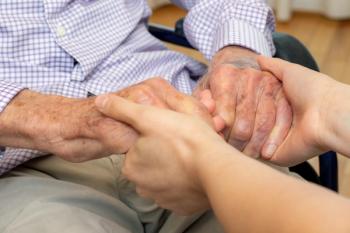
Does Telemedicine for Diagnosis Have a Place in Healthcare?
Telemedicine for diagnosis scaled up dramatically as a result of the pandemic, but there isn’t much known about the impact on diagnostic quality and safety.
Health systems using telemedicine often measure patient satisfaction with the service but are less likely to measure the accuracy of a diagnosis, according to an issue brief from the Society to Improve Diagnosis in Medicine (SIDM).
SIDM conducted a series of interviews with hospitals, health systems, and clinical practices as part of its TeleDx project. The interviews and a literature review identified a gap in the health system’s understanding of telemedicine. Approximately one in 10 diagnoses are incorrect, which affects more than 12 million Americans each year.
As the use of telemedicine drastically increased during the pandemic, it is crucial to understand how telediagnosis impacts diagnostic quality and safety, according to SIDM.
“We found that telediagnosis has potential, although there is still much to learn about how virtual diagnosis can be done most effectively,” Suz Schrandt, JD, senior patient engagement advisor at SIDM and principal investigator on the project,
Before the pandemic, telemedicine was a niche resource, but it has become a mainstay for healthcare delivery. Most research on telemedicine focuses on maintenance of health, according to the report, but telediagnosis at the current scale it’s being used to less researched.
The findings focused on five key aspects of novel implementations: reach, effectiveness, adoption, implementation, and maintenance.
Reach. Both the literature and the interviews clearly showed telemedicine for diagnosis had rapid uptake over the course of a few months. Patients felt like to transition to telemedicine was seamless, but health systems, hospitals, and providers reported it being more stressful.
“Interestingly, in our patient listening sessions, no clear patient ‘prototype’ materialized as the most or least likely to use and benefit from telemedicine; stereotypical assumptions about age and concordant technical savvy did not fully pan out, with some clinicians sharing that many older patients were particularly engaged users,” according to the report.
Effectiveness. The evidence on telediagnosis is mixed and limited, based on the literature review. In the interviews, both patients and providers noted the convenience of telediagnosis, and they also reported a better connection since providers were looking at the computer, and thus at the patient.
“One challenge that emerged within each stakeholder group was the difficulty in measuring or evaluating the true impact of telemedicine on quality and safety, and this remains the key research question that needs to be addressed.”
Adoption. There were many accommodations, from state regulations to CMS changes, that led to the uptake and adoption of telemedicine. Even after the pandemic, stakeholders believe there will remain a hybrid model of care, according to the interviews. While hospitals, health systems, and providers largely agreed on adopting telemedicine, resources and capacity differed across the stakeholders.
“Larger systems and clinics with already-dedicated IT teams were able to move more quickly and expansively; smaller clinics and solo practitioners often fended for themselves,” according to the report.
Implementation. Policy issues have been the key barriers to implementing telemedicine, and the literature review also found clinicians struggled with pivoting because of the inability to perform a physical exam. In the interviews, some providers explained that they had developed workarounds to not being able to perform the physical, in-person exam.
An important question being considered is when a patient must be seen in person and when they can be seen virtually. Providers had clear examples on either end of the spectrum, but a lot of gray area in the middle, while patients felt familiar symptoms and simple issues could be kept virtual with something new or different prompting an in-person visit.
Maintenance. There seems to be a desire to continue using telemedicine in some capacity, but questions around the long-term use and sustainability remain, according to the literature. Even clinicians hesitant about the use of telediagnosis said there is a place for virtual care.
“Much, if not all of the future direction of telemedicine rests on the regulatory, legal, and reimbursement landscape,” the report said.
At the beginning of the pandemic, the quick shift to virtual care was necessary. But as the pandemic wears on and people begin to look toward a future after the pandemic, there are questions about the viability of telediagnosis and how to continue utilizing it, according to the report.
“Overall, research priorities regarding the effectiveness of telediagnosis must focus on what symptoms require in-person assessments; what the right mix of in-person and virtual care looks like; who is being left behind in the expansion of virtual care; and what determines success or failure in telediagnosis,” said Mark Graber, MD, FACP, founder and president emeritus of SIDM, and co-author of the issue brief.








































